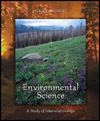 |  Environmental Science: A Study of Interrelationships, 8/e Eldon Enger,
Delta College
Bradley F. Smith,
Western Washington University
Human Impact on Resources and Ecosystems
Chapter ObjectivesAfter reading this chapter, you should be able to:
| Recognize that humans have an increasing impact on natural ecosystems. |
 |  |  | | Differentiate between renewable and nonrenewable resources. |
 |  |  | | Recognize that mineral resources are unevenly distributed, which creates international trade in these commodities. |
 |  |  | | List three types of costs associated with mineral exploitation. |
 |  |  | | Understand that some wilderness areas still have minimal human influence. |
 |  |  | | Appreciate the ways humans modify forests. |
 |  |  | | Identify causes of desertification. |
 |  |  | | Recognize that aquatic systems are modified by terrestrial changes. |
 |  |  | | Identify changes that occur to aquatic systems as a result of human activity. |
 |  |  | | Recognize that wildlife management focuses on specific species. |
 |  |  | | Appreciate that waterfowl management is an international problem. |
 |  |  | | Recognize that extinction is a natural process. |
 |  |  | | Recognize that humans increase the rate of extinction. |
 |  |  | | Identify ways that humans cause extinctions. |
 |  |  | | Recognize that many extinctions can be prevented if societies are willing to preserve crucial habitats and prevent the hunting of endangered species. |
|



 2002 McGraw-Hill Higher Education
2002 McGraw-Hill Higher Education